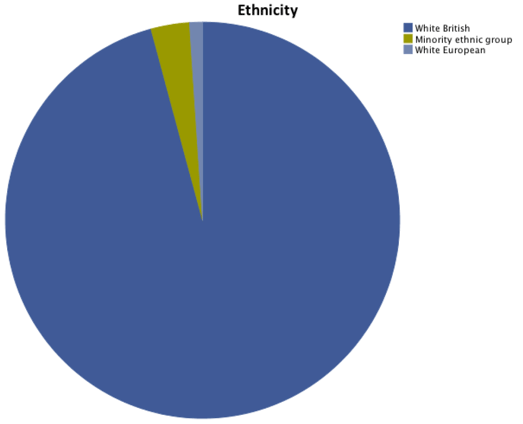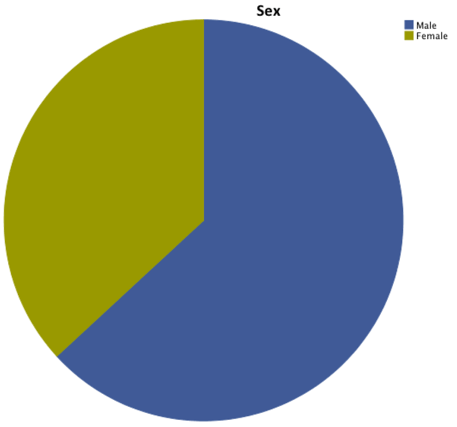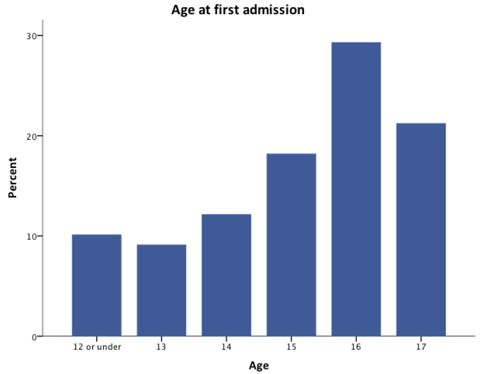Child and Adolescent Mental Health Services: inpatient report
A report recommending improvements to respond better to the needs of children and young people with Learning Disability (LD) and/or autism.
A4.2 Demographic information on patients included in study
Demographics – summary
>95% white British
63% male
- As the severity level of the learning disability increased, males were more likely to be over-represented: 55% were male where there was no learning disability, to 80% male where there was severe/profound learning disability
Age range 8-17; mean 14.9, mode 16
- those with moderate/severe/profound learning disability were more likely to have admission at a younger age
30% of submissions were for looked after and accommodated children
- highest rates for those with moderate learning disability
A4.2.1 Ethnic group (all patients)

A4.2.2 Gender (all patients)

As the level of learning disability of a patient became more severe, the higher the male to female ratio became:
- No learning disability – male 55%, female 45%
- Mild learning disability – male 60%, female 40%
- Moderate learning disability – male 70%, female 30%
- Severe/profound learning disability – male 80%, female 20%
A4.2.3 Age (at first admission within study period for all patients)

- Mean age – 14.9 years (SE .2, SD 2.03)
- Mode 16
- Variance 4.1
Patients with moderate/severe/profound learning disability were more likely to have their first admission at a younger age, compared with those with no or mild learning disability.
A4.2.4 Looked-after children
30% of all admissions, including transfers, in the returned clinician questionnaires related to looked-after children. This includes those looked after by voluntary agreement of the parents, for example when attending residential school.
All children and young people with learning disability were more likely to be looked-after than those without learning disability. This was particularly high for those with moderate learning disability:
- No learning disability – 18% looked-after
- Mild learning disability – 29% looked-after
- Moderate learning disability – 39% looked-after
- Severe/profound learning disability – 30% looked-after
Contact
There is a problem
Thanks for your feedback